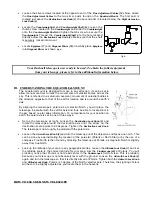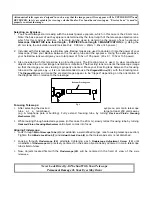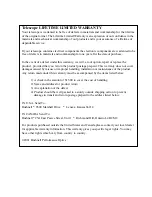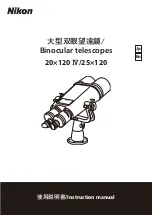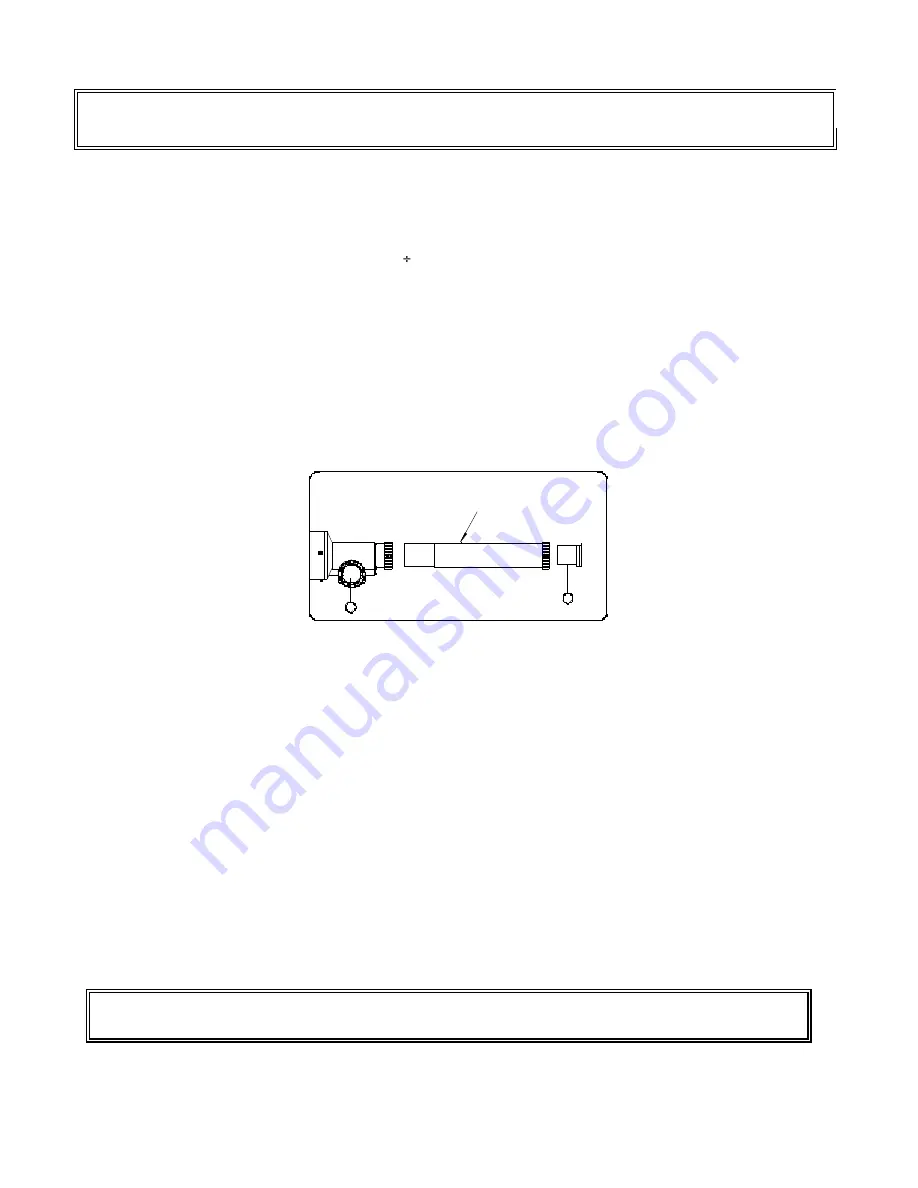
Astronomical telescopes are designed in such a way that the image you will see appear will be UPSIDE DOWN and
REVERSED, this is acceptable for viewing celestial bodies. For land-based viewing an “Erector Lens” is used to
properly re-orient the image.
Selecting an Eyepiece:
1. You should always start viewing with the lowest power eyepiece, which in this case is the 20 mm lens.
Note: the base power of each eyepiece is determined by the focal length of the telescope objective lens,
which for this model is 900 mm. A formula can be used to determine the power of each eyepiece:
telescope OBJECTIVE lens focal length EYEPIECE focal length = MAGNIFICATION
(e.g. Using the
20 mm lens, the calculation would look like this: 900 mm
÷
20mm = 45x or 45 power.)
2. Included with this telescope is a Barlow lens. Barlow lenses are used to double or triple the power of your
telescope. Place your Barlow between the focusing tube and the eyepiece. Using the example above,
your 3x Barlow lens would give you a total power of 135x or 135 power. (45 x 3 = 135x or 135 power)
3. Also included with this telescope is an Erecting lens. The Erecting lens is used to view land-based
objects where the correct image orientation is important. The Erecting lens re-orients the telescope image
so that the image you are viewing is properly oriented. Place your Erecting lens between the focusing
tube and the eyepiece
(fig. c).
It is not recommended to use the
Diagonal Mirror (16)
with the Erecting lens.
The
Diagonal Mirror
will make the erected image appear to be “flipped” depending on the orientation of
the diagonal mirror- relative to the telescope.
Focusing Telescope:
1.
After selecting the desired
eyepiece, aim main telescope
tube at a land-based
target at least 200 yards away
(e.g. A telephone pole or building). Fully extend focusing tube by turning
Rack and Pinion Focusing
Mechanism (15).
2.
While looking through selected eyepiece (in this case the 20 mm), slowly retract focusing tube by turning
Rack and Pinion Focusing Mechanism
until object comes into focus.
Aligning Finderscope:
1.
Look through
Main Telescope Tube
(2)
and establish a well-defined target. (see focusing telescope section)
Tighten the
Altitude Lock Knob (7)
and
Azimuth Lock Knob (8)
so that telescope’s aim is not disturbed.
2.
Looking through
Finderscope (20)
, alternate tightening each
Finderscope Adjustment Screw (19)
until
crosshairs of
Finderscope
are precisely centered on the same object already centered in main telescope
tube's field of view.
3.
Now, objects located first with the
Finderscope (20)
will be centered in the field of view of the
main
telescope.
Never Look Directly At The Sun With Your Telescope
Permanent Damage To Your Eyes May Occur
fig. c
17
15
Barlow or Erecting Lens



